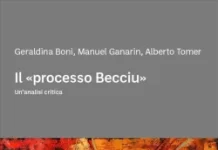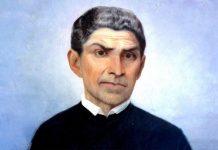The medal of St. Benedict is an effective shield in difficult times such as epidemics, pandemics, disease and demonic infestations.
Newsdesk (June 21, Gaudium Press) The Medal of St. Benedict is a sacramental and powerful instrument of protection against the devil, sin and all kinds of evil. Throughout the centuries, there have been recorded numerous testimonies of those who have obtained saving graces through this medal: help in cases of illness, protection against slander, spells, and accidents while traveling; conversions and exorcisms of people, as well as granting special graces at the hour of death; among other countless effects.
History of the Medal of Saint Benedict
Its origin dates back to the following fact: Once, an envious and unscrupulous man wanted to grab the land belonging to the Order of Saint Benedict in the German city of Metten, on which was a large monastery. To do so, he turned to a group of witches, who asked the father of lies to get them out of there. For a long time the witches asked the devil to do this, but they achieved nothing.
Now, wanting to know why he could not achieve his evil goal, the man then asked one of the witches, who told him, “We can do nothing in the places where a certain cross is inscribed. Frightened, the man returned home and a short time later fell ill. At the moment of his death, he confessed his sins and told those around him about it. The news spread quickly through the region and when they went to investigate, they found the image of the Cross of St. Benedict in various parts of the convent. This cross, which in the 17th century drove away the infernal enemy and protected the convent of Metten, is the one we find today engraved on the medal of St. Benedict. Later, the image of the Holy Cross was inserted by a grant from Pope Benedict XIV (1741).
Prayer of the Medal of Saint Benedict in Latin and Portuguese
On the side where we see the Cross we have inscribed around it the word PAX (peace), that is, the motto of the Order of St. Benedict (Benedictines). Sometimes PAX is replaced by the monogram of Christ “IHS”. Thus, to understand the prayer of the St. Benedict Medal, it is necessary to turn to the inscriptions on the medal itself. Between the arms of the Cross are four initials (letters) “C.S.P.B.”, which stand for “Crux Sancti Patris Benedicti” – “The Cross of the Holy Father Benedict”
Around it we have the prayer of an exorcism which is summarized in the letters:
“C.S.S.M.L”: “Crux Sacra Sit Mihi Lux” – “The Holy Cross be my light”.
“N.D.S.M.D”: “Non Draco Sit Mihi Dux” – “Let not the dragon be my guide”.
“V.R.S.N.S.M.V”: “Vade Retro Satana Nunquam Suade Mihi Vana” – “Withdraw Satan, never advise me vain things!”
“S.M.Q.L.I.V.B” – “Sunt Mala Quae Libas Ipse Venena Bibas” – “It is bad what you offer me, drink your poisons yourself!”.
* * * * *
There is no record of when the Patriarch’s medal was first made; there are only records of it being made from the 15th century onward. The final version of the medal dates back to the year 1880, in commemoration of the 1400th anniversary of the birth of Saint Benedict. For this reason, it is also called the “jubilee medal”. The inscription “Vade retro Satana” indicates its exorcistic properties. Such a medal is also considered by some to be an “exorcistic medal”.
Image and Cross of the medal of Saint Benedict
On the back of the medal we see the image of Saint Benedict, holding in his left hand the book of the Rule that he wrote for the monks, and in the other hand he holds a Cross; next to him we see a chalice, from which a serpent comes out, and a raven. These two symbols recall the two attempts to poison the Saint.
Writings around the medal of Saint Benedict
Around the image of Saint Benedict we read: “Eius In Obitu Nro Praesentia Muniamur” – “Let us be comforted by the presence of Saint Benedict at the hour of our death”. A request that united to the Hail Mary, “pray for us sinners, now and at the hour of our death”, fills us with confidence in the present moment and in our final hour, when we hope to hear from the lips of the Divine Master: “Come, blessed of my Father”.
Death attempt and blessing of Saint Benedict
Two facts are recorded on the medal of Saint Benedict. The first occurred in a monastery near the cave where St. Benedict had taken refuge, which was without an abbot. The monks asked the saint to assume the position of superior, but he did not want to accept, explaining that his customs would not harmonize with those of the monks who led a life already loose and without observance of the rule. But after much insistence by the religious, he eventually accepted.
Well, Saint Benedict then began to demand the observance of the monastery’s customs and rule. Repentant over the choice of such a superior, they decided to kill him by putting poison in his wine cup. When the servant of God sat down at the table, they presented him with the drink. Following the custom of the house, he extended his hand and pronounced the blessing. At the same moment, the cup smashed to pieces. Realizing what had happened, he quietly stood up and called the community together, saying, “God have mercy on you, brothers. Why did you want to do this to me? Didn’t I tell you beforehand that your customs would not be in harmony with mine? Go and find yourselves a Father suitable for your life; after this you will no longer be able to keep me. Thus, St. Benedict returned to his cave.
The envy of a priest towards Saint Benedict
The second fact recorded on the medal of Saint Benedict is that a priest of a church near the monastery where Saint Benedict lived at the time, began to envy the virtues of the saint, and not being able to denigrate the person of the servant of God, decided to kill him by sending him a gift of poisoned bread.
At mealtimes, it was customary for a raven to appear and be fed daily with a piece of bread that it received from the hands of Saint Benedict. That day, the moment the bird appeared, the crime of the envious presbyter was revealed to the saint. Saint Benedict threw the crow the whole loaf of bread and ordered him to throw it far away, where no one could find it. The bird took the bread in its beak and flew away, later returning with nothing. (EPC)


































